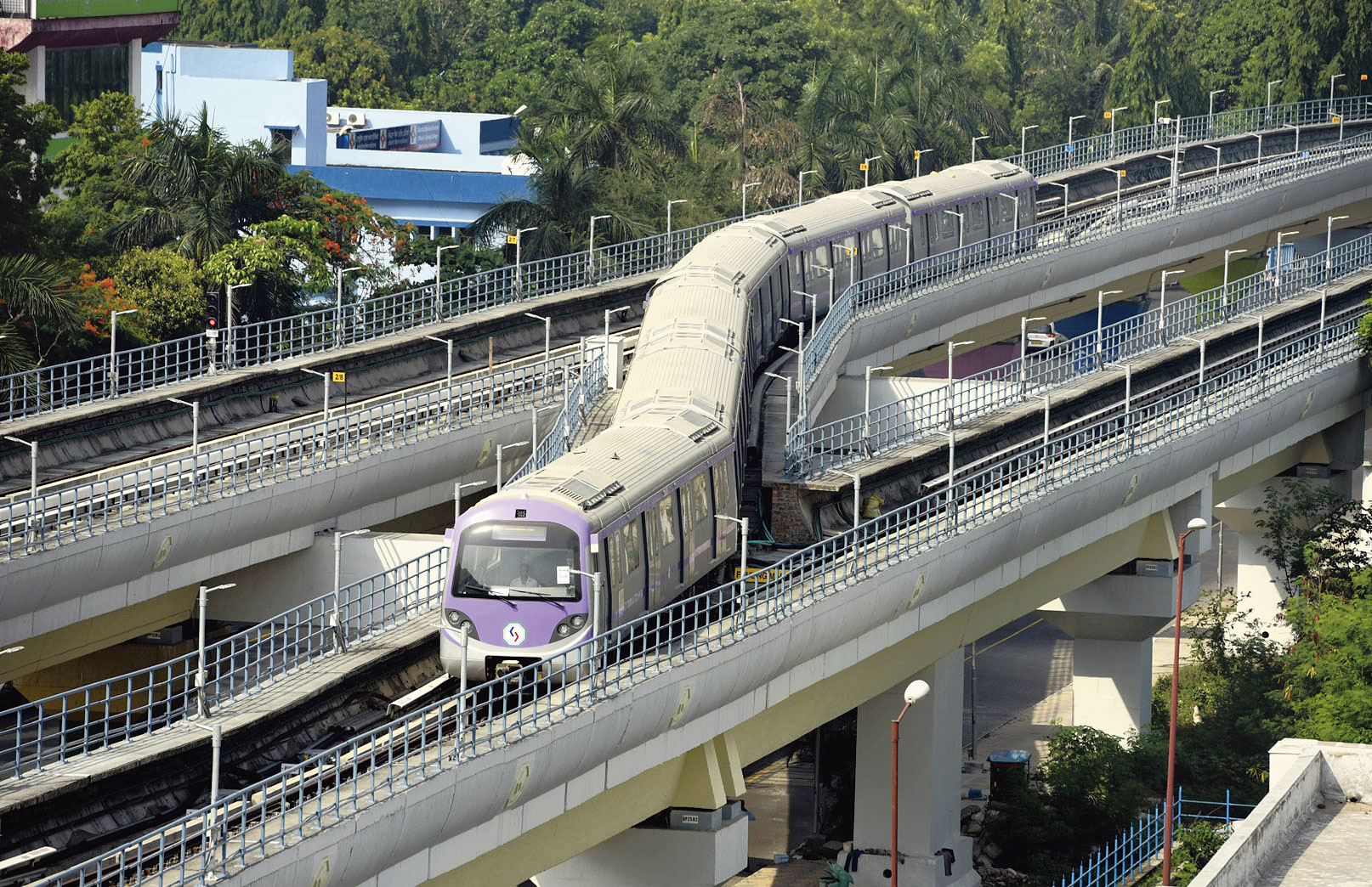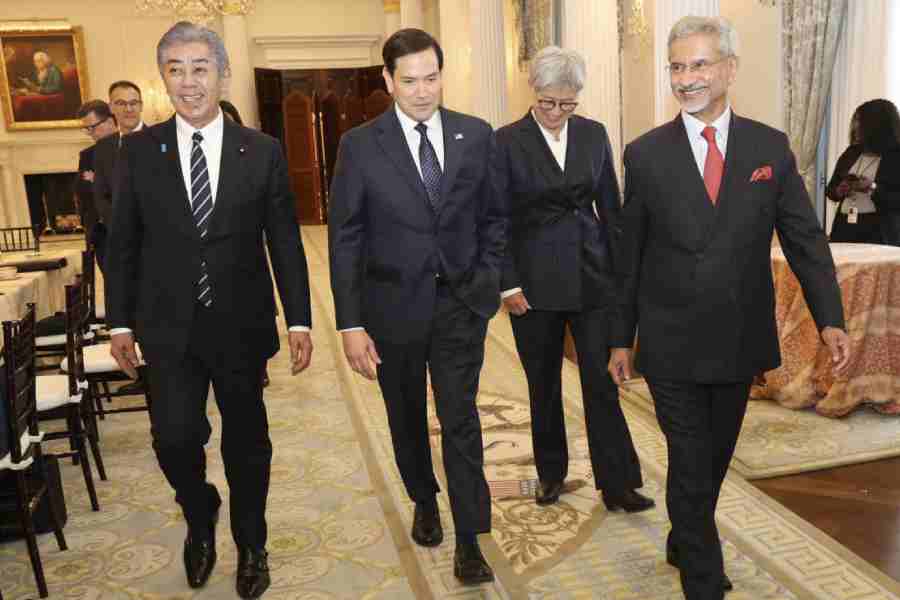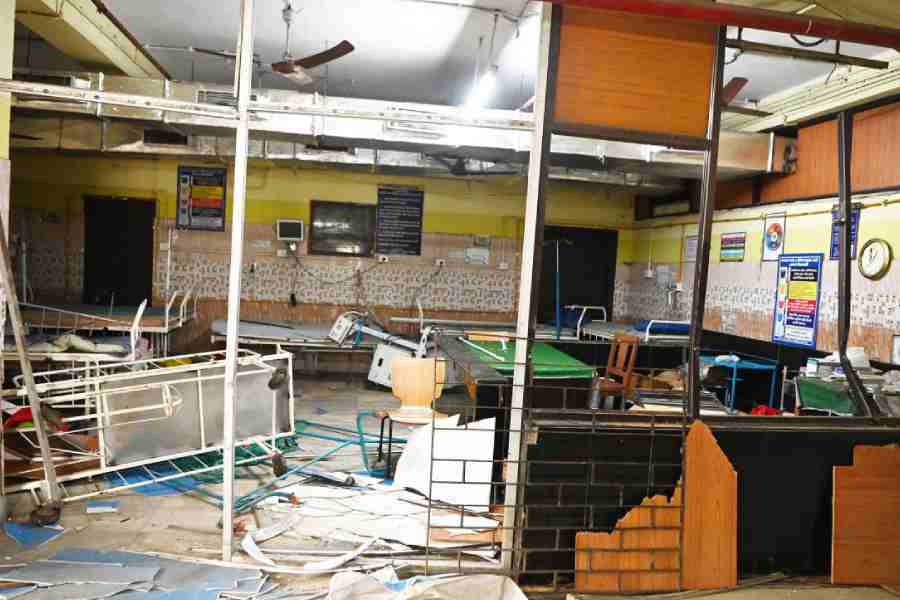This is the only city where Metro is run by the railways, a system that urban transportation professionals feel must change for safety and services to improve.
Sajal Kumar Kanjilal, who was dragged to death at Park Street station by an air-conditioned Metro train after his hand got stuck between closing door flaps of a coach on Saturday, paid the price for the lack of basic safety features in the city’s transport lifeline.
In all other cities, Metro is jointly owned by the respective state governments and the Union urban development ministry.
In some cities, it is run on a private-public partnership mode.
“Calcutta Metro is completely owned by the railways. Unless the ownership is changed or the service is allowed to function under a corporation, like in Delhi, things will not improve,” a senior official of the city Metro said.
The Metro networks in Delhi and Bangalore are run by the Delhi Metro Rail Corporation and the Bangalore Metro Rail Corporation. Both are joint ventures between the respective state governments and the Centre and they function independently.
“The two bodies have the freedom to take decisions related to safety and other matters, such as buying rakes, fixing fares and outsourcing maintenance,” the official said. “In comparison, Calcutta Metro has no say in the type of rakes it will operate or the fares it will charge.”
Metro spoke to several officials and people dealing in urban transportation and here’s what they say ail Calcutta Metro
Workforce
Ideally, a Metro system should have 30 people working for every kilometre, said an urban transportation professional.
“Calcutta Metro covers 27km. That means Metro should have around 800 employees working under it. Our staff strength is 4,000-plus, which is five times the ideal figure. This leads to heavy overhead cost,” a Metro official said. “The staff strength will be justified if no fresh recruitment is made after the ongoing expansion projects are over.”
Despite being a bloated organisation, there are often allegations of lapses in basic services. Many platforms do not have enough personnel to prevent accidents such as the one that claimed Kanjilal’s life.
Outsourcing is the model followed by many Metro operators. “Security is not outsourced. Other than that, most services are outsourced,” said an official of a Metro in another city. Services like cleaning and maintenance are outsourced to private agencies.
“Maintenance is handled professionally if it is outsourced to a private agency,” the official pointed out.
For Calcutta Metro, maintenance has been a serious issue. Even new rakes are hit by snags, for which poor maintenance is blamed.
Revenue
Calcutta Metro had last year incurred a loss of around Rs 350 crore, said sources.
“We are not allowed to explore new revenue models because of strict railway ministry rules,” an official said.
One of the major ways to boost revenues is to hike fares. Metro fares have not been increased for years — the minimum is still Rs 5 and the maximum, Rs 25.
In contrast, the minimum and maximum fares of Delhi Metro are Rs 8 and Rs 60.
“Calcutta Metro fares are unrealistic. Several proposals for fare revision have been sent to the railway ministry but no decision has yet been taken,” the official said.
Sources said the tendency of ruling parties to be populist always came in the way of the railways taking a realistic decision on fares.
Calcutta Metro officials said the authorities running Metro in other cities were exploring innovative ways to earn more revenue.
In Maharashtra, for instance, a surcharge of one per cent on stamp duty is collected to raise funds for infrastructure projects such as Metro and Mono Rail.
Calcutta Metro still depends on conventional revenue sources such as fares and advertisement. Sources said there were plans to develop realty projects on Metro land but that did not happen.
Decision-making
Calcutta Metro has to seek the Railway Board’s nod for almost every decision, unlike the Metro in other cities.
“We are operating the trains but can’t take a decision on any important matter. We need approval of bureaucrats, for which we often have to wait for months,” an official said.
The Telegraph reported on Wednesday how the city Metro’s tunnel vision came in the way of installing platform screen doors. The specifications of trains built by various manufacturers are different and so screen doors, an essential safety feature of most modern Metro, could not be installed.
Capital inflow
A senior Calcutta Metro official said an estimated capital expenditure of Rs 1,000 crore was required to improve services in the creaking mass transportation system.
“Basic safety devices such as fire and smoke detectors are not there at many stations,” the official pointed out. “When Metro in most cities are going for the advanced signalling system, Calcutta Metro is still awaiting the green signal from the Railway Board to upgrade its system.”
Installation of platform screen doors, which can prevent accidents and save energy by preventing the cool air from air-conditioners from escaping into the tunnel, would call for huge expenditure.
“The ministry will not spend so much money for a loss-making project. We need investors from outside but that is possible only when the service is run by an independent agency,” another official said.











